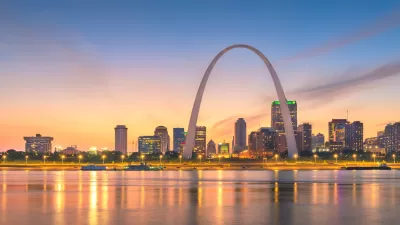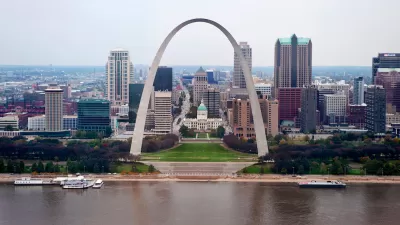Excavating in East St. Louis in advance of an approaching freeway and future development, archaeologists have uncovered the remains of a sophisticated American Indian settlement nearly a thousand years old that "no one knew existed."
Véronique LaCapra reports on the surprising settlement uncovered by Joe Galloy, with the Illinois State Archaeological Survey, and his team located five miles from the ancient city of Cahokia, once the largest American Indian city north of Mexico, and considered the greatest achievement of Mississippian culture.
"One of the things that I imagine an ancient visitor to this site would have experienced was kind of a sense of awe and wonder," Galloy says. "There would be fires and things like that. People cooking stuff - all sorts of activity. And you'd see this huge village. And it was probably a very impressive site, one of the largest settlements that people had seen if they hadn't been around this area before."
Scientists, including University of Illinois anthropologist Tim Pauketat, worry that the construction of a new bridge across the Mississippi River threatens the future of site. "By the time the East St. Louis dig wraps up later this year, only about a tenth of the ancient settlement will have been excavated. He [Pauketat] says once the new Mississippi River bridge is finished, the other 90 percent, which is still buried under private land, could be destroyed.
"Because East St. Louis is right across from St. Louis, it's prime land for any kind of commercial development," he says.
"Pauketat and a number of other archaeologists are trying to get the federal government to buy the land around the dig site."
Thanks to Daniel Lippman
FULL STORY: Ancient Suburb Near St. Louis Could Be Lost Forever

Study: Maui’s Plan to Convert Vacation Rentals to Long-Term Housing Could Cause Nearly $1 Billion Economic Loss
The plan would reduce visitor accommodation by 25,% resulting in 1,900 jobs lost.

North Texas Transit Leaders Tout Benefits of TOD for Growing Region
At a summit focused on transit-oriented development, policymakers discussed how North Texas’ expanded light rail system can serve as a tool for economic growth.

Why Should We Subsidize Public Transportation?
Many public transit agencies face financial stress due to rising costs, declining fare revenue, and declining subsidies. Transit advocates must provide a strong business case for increasing public transit funding.

How to Make US Trains Faster
Changes to boarding platforms and a switch to electric trains could improve U.S. passenger rail service without the added cost of high-speed rail.

Columbia’s Revitalized ‘Loop’ Is a Hub for Local Entrepreneurs
A focus on small businesses is helping a commercial corridor in Columbia, Missouri thrive.

Invasive Insect Threatens Minnesota’s Ash Forests
The Emerald Ash Borer is a rapidly spreading invasive pest threatening Minnesota’s ash trees, and homeowners are encouraged to plant diverse replacement species, avoid moving ash firewood, and monitor for signs of infestation.
Urban Design for Planners 1: Software Tools
This six-course series explores essential urban design concepts using open source software and equips planners with the tools they need to participate fully in the urban design process.
Planning for Universal Design
Learn the tools for implementing Universal Design in planning regulations.
City of Santa Clarita
Ascent Environmental
Institute for Housing and Urban Development Studies (IHS)
City of Grandview
Harvard GSD Executive Education
Toledo-Lucas County Plan Commissions
Salt Lake City
NYU Wagner Graduate School of Public Service





























